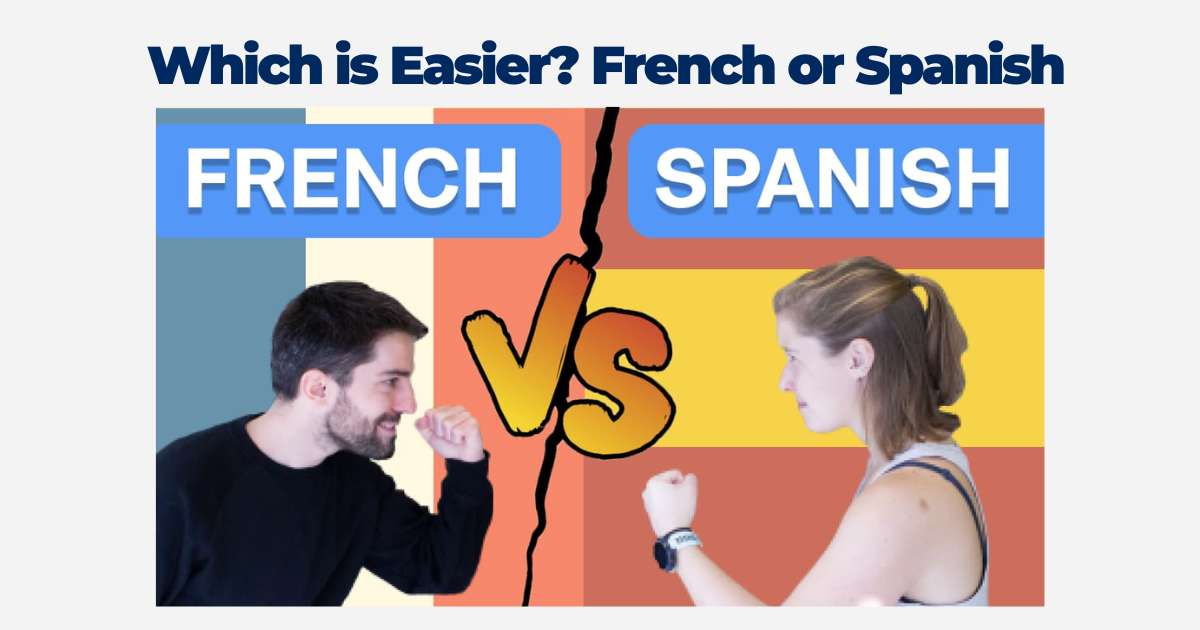French or Spanish? Why Learn French? Top Benefits
Many people choose to learn French or Spanish to boost their careers, expand their cultural knowledge, or prepare for international travel. Here’s why learning French might be the right option for you:

Number of Speakers Worldwide
French is spoken by more than 300 million people globally. It is an official language in 29 countries, including France, Canada, Belgium, and many African nations.
Global Reach
French is an official or administrative language in countries like:
- France
- Canada (especially Quebec)
- Belgium
- Switzerland
- Senegal
- Ivory Coast
- Madagascar
Language Difficulty
According to CEFR and DELF levels:
- French is considered a Category I language for English speakers by the U.S. Foreign Service Institute.
- It takes around 600-750 hours of study to reach proficiency.
Career & Travel Usefulness in 2025
French is highly valuable in:
- Diplomacy and international relations (United Nations, EU)
- Fashion, luxury goods, and hospitality
- Traveling in Western Europe and parts of Africa
Cultural Influence
French culture has had a massive impact on:
- Cinema (Cannes Film Festival)
- Art (Impressionism, modern art)
- Literature (Victor Hugo, Albert Camus)
- Cuisine (Michelin-star restaurants, gastronomy)
Read more: Reasons to learn French
French or Spanish? Why Learn Spanish? Top Benefits
Still deciding whether to learn French or Spanish? Let’s look at what makes learning Spanish a smart choice, especially for beginners.

Number of Speakers Worldwide
Spanish is the second most spoken native language in the world with over 500 million speakers.
Global Reach
Spanish is the official language of 20 countries, including:
- Spain
- Mexico
- Argentina
- Colombia
- Peru
- Chile
- Most of Central and South America
It’s also widely spoken in the United States, with over 40 million speakers.
Language Difficulty
Spanish is also a Category I language, considered one of the easiest for English speakers:
- DELE exam levels are similar to CEFR
- Roughly 550-600 hours to reach proficiency
Career & Travel Usefulness in 2025
Spanish is useful for:
- Jobs in education, customer service, health, and international business
- Travel in Latin America, Spain, and the U.S.
- Bilingual roles, especially in North America
Cultural Influence
Spanish contributes to global culture through:
- Telenovelas and Netflix series
- Latin music and dance (salsa, reggaeton)
- Nobel-winning literature (Gabriel García Márquez, Pablo Neruda)
Pronunciation, Grammar, and Vocabulary: French or Spanish? Which is Easier?
Still unsure whether to learn French or Spanish? Let’s compare how beginner-friendly these two languages are in terms of pronunciation, grammar, and vocabulary.

Learn French or Spanish? Pronunciation for Beginners
| Feature | French | Spanish |
| Silent letters | Common | Rare |
| Phonetic spelling | Low | High |
| Nasal sounds | Yes | No |
| Rolling “r” | Optional | Common |
Spanish is more phonetic, meaning words sound like they’re spelled—easier for beginners.
Learn French or Spanish? Grammar Comparison
| Grammar Point | French | Spanish |
| Verb conjugation | More irregularities | More regular patterns |
| Gender | Masculine/Feminine + silent endings | Masculine/Feminine with visible endings |
| Sentence structure | Subject-verb-object | Subject-verb-object |
Spanish grammar is generally more consistent and easier to master for English learners.
Vocabulary Overlap with English
- French has more direct borrowings in English (e.g., “rendezvous,” “ballet”).
- Spanish shares many Latinate roots and is easier to guess based on context.
Learning Curve for Speaking, Writing, Listening
- Speaking: Spanish is easier due to clear pronunciation.
- Writing: Both can be tricky; French has more silent letters.
- Listening: Spanish is faster, but French can be hard due to nasal sounds and contractions.
Time to Fluency
- Spanish wins for speed: about 550-600 hours to reach B2 level.
- French: typically 600-750 hours for the same level.
So, Should You Learn French or Spanish? To summarize:
- Want to travel or work in Latin America or the U.S.? → Learn Spanish
- Interested in culture, fashion, and diplomacy? → Learn French
- Looking for the fastest and easiest to learn? → Spanish is often easier for beginners
Ultimately, whether you learn French or Spanish, both are rewarding, global languages. It depends on your goals, interests, and where you plan to use your language skills. Whether you decide to learn French or Spanish, start your journey today with engaging courses and expert guidance at GuruLango would be the first firm step toward your language goals.
Learn French or Spanish? FAQ
How similar are French and Spanish?
Both are Romance languages with Latin roots. They share similar vocabulary, sentence structures, and verb conjugation patterns.
Is French closer to Spanish or Italian?
French and Spanish are similar but Spanish is more closely related to Italian, especially in pronunciation and vocabulary.
Is French or Spanish more useful in Europe?
Learn French or Spanish? Spanish is more widely spoken, but French is more useful for official and diplomatic purposes. So, If you’re looking for wider native communication, go with Spanish. If you want greater official and diplomatic utility, choose French.